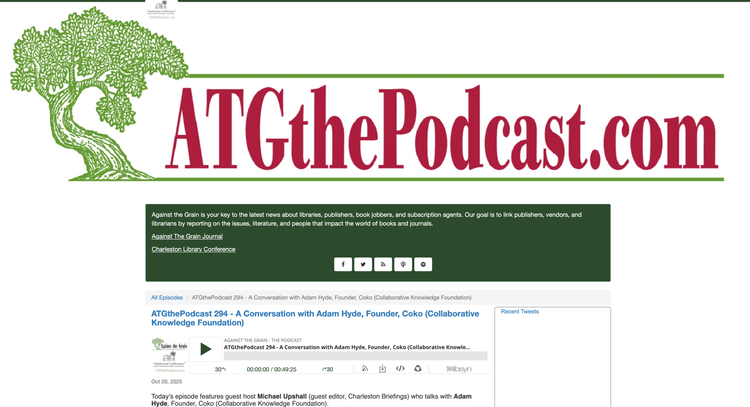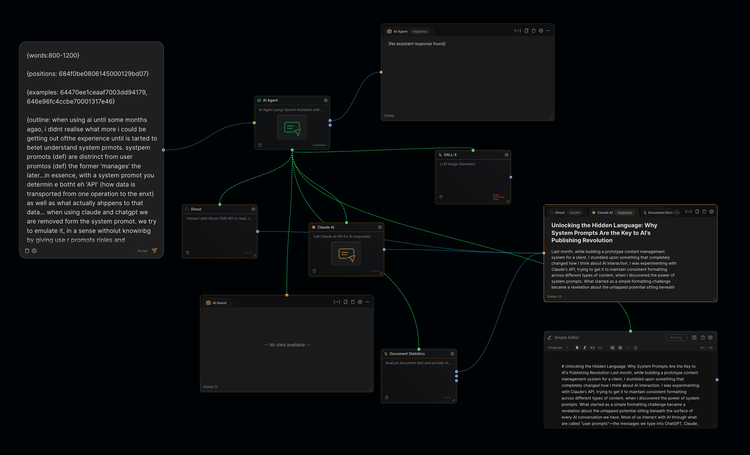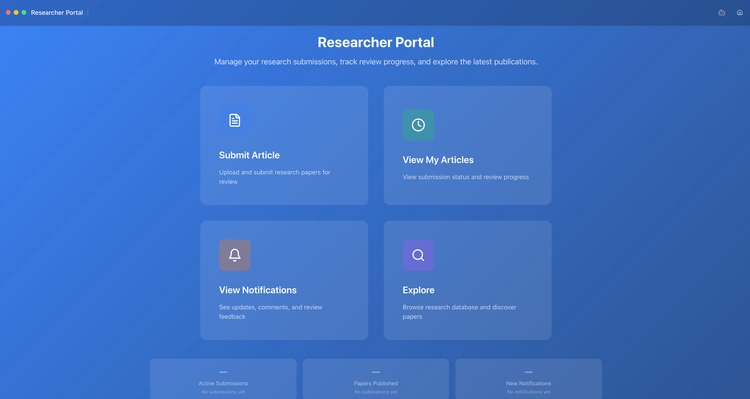The Meaninglessness of Software Categories: A Case for Kotahi as a Scholarly Communications System

Software categories are a cognitive trap. We label tools as “journal systems,” “publishing platforms,” or “manuscript submission systems,” reducing complex tools to narrow, overly simplistic definitions. At first glance, this might seem "mostly harmless"—an annoyance when discussing tools but nothing more. However, there’s a deeper issue: software designers and architects often internalize these narrow categories, embedding their constraints into the very tools they design and create. This perpetuates a self-reinforcing loop, stifling innovation and limiting the creative thinking needed to push boundaries and explore new possibilities.
Don't mistake the tool for the purpose.
- Peter Kirk
The real challenge for software designers is to break free from these predefined boxes. To build for the purpose - the problem that is trying to be solved, not to build for the category.
For those of us who aim to build 'to the purpose' the question becomes: how do you approach software design in a way that liberates it from the internalized constraints of traditional categories - how do you 'see the problem', the purpose, beyond the category, and build a better solution than those that have come before?
It is an understatement to say that this is hard. It is hard to 'see the problem' and execute on it (its largely about taking risks, peeling away assumptions over time, and sticking with your iteratively gained new insights) and, further, the temptation to subscribe to traditional designs is all to easy given this is what people expect to see. Building legacy is far easier to attract funding and investment, and to communicate and market.
But I think I'll write more about this in coming posts. What I want to do right now is talk a little about software categories and Kotahi, and how Kotahi is one of those tools 'designed with purpose' which, by existing, denies current software taxonomies.
Not a Journal Platform
Kotahi is not a journal system or a submission platform, although you can use it for these purposes. Those categories are too reductive to house Kotahi.
Kotahi is a scholarly communications system—a tool built to support the entire lifecycle of scholarly work, from authoring and submission to review, publishing, and integration with external systems. It’s designed to adapt to the evolving needs of modern scholarship, enabling researchers and institutions to break free from rigid workflows and predefined boundaries.
I'll focus briefly on several key characteristics that make Kotahi useful across a huge variety of scholarly use cases, which in turn makes it hard for Kotahi to fit neatly into any of the existing boxes we use to talk about this domain.
The Research Object: Redefining the Core Unit
Most systems in the scholarly space revolve around the manuscript, treating it as the sole focus. Kotahi takes a broader, more inclusive approach. At its core is the concept of the research object—a flexible unit that can be a manuscript, metadata, a dataset, code, dynamaic objects, part of a linked data system, or even a review or evaluation (or a mixture of any of these). This versatility allows Kotahi to handle the diverse types of content that define modern research, setting it apart from systems that rigidly focus on manuscripts and metadata.
Beyond Submission: Authoring and Batch Ingestion
Kotahi begins where other systems often stop. Most platforms assume that content is created elsewhere, managing submissions only after they’ve been completed. Kotahi, however, supports authoring directly within the platform, enabling researchers to draft, edit, and refine their work in the same environment where it will be reviewed and published.
Submission itself is also reimagined. Kotahi supports batch ingestion, allowing entire datasets or collections of content to be brought into the system at once. For example, Kotahi integrates with Semantic Scholar to batch-import preprints from various servers, making them ready for review. This flexibility challenges the traditional view of submission as a manual, one-off process.
Collaboration Without Boundaries
Kotahi emphasizes collaboration, breaking free from the rigid, industrial-style workflows that dominate scholarly publishing. Traditional systems enforce gated processes, where specific roles and stages dictate who can act and when. Kotahi offers a different approach. It supports hierarchical roles for those who need structure, but it also enables flat, community-driven collaboration where tasks and decisions are shared equally.
This flexibility accelerates communication, reduces inefficiencies, and empowers communities to define workflows that suit their unique needs—whether that’s a traditional journal, a preprint review group, a large data repository or some new way of working.
Functional Spaces: A Flexible Workflow Model
Most platforms force users to navigate a rigid pipeline, where tasks must progress through predefined stages. Kotahi introduces the concept of functional spaces—dynamic areas where users can perform specific actions at any time. Workflow is guided by convention and a task manager, rather than locked into a fixed sequence programatically.
This approach allows for unparalleled flexibility. A preprint review group can publish updates at any stage in the process. A journal editor can approve a submission for publication without waiting for other stages to be “completed.” Kotahi adapts to the needs of its users, rather than forcing users to adapt to its predefined workflow.
Open-Ended Publishing: Redefining a Loaded Term
In many arenas, “publishing” has become a loaded word—often viewed with skepticism or outright rejection. Preprint servers, for example, prefer to frame their activities as “content distribution,” deliberately distancing themselves from the baggage associated with traditional publishing. This shift reflects a broader discomfort with the rigidity and perceived exclusivity of what publishing has historically represented.
In Kotahi, publishing is treated not as a final destination but as a configurable and open-ended action—more akin to modern web concepts of “sharing” than the traditional notion of publishing. It’s about enabling content to flow freely across systems and communities, adapting to the diverse needs of researchers and institutions.
Kotahi supports a wide range of 'publishing' or 'sharing' models, empowering users to define what this means in their context:
- Progressive publishing, where preprints and evaluations are continuously updated over time.
- Content export, such as pushing reviewed datasets to external repositories like Astromat.
- Integration with external systems, allowing seamless publishing to external content management systems or leveraging Kotahi’s built-in CMS.
- Metadata dissemination, connecting to broader scholarly infrastructure systems
By framing publishing as a dynamic and fluid process, Kotahi bridges the gap between traditional practices and emerging models of scholarly communication. Whether it’s a journal updating articles incrementally, a preprint server sharing iterative evaluations, or a data repository ensuring that reviewed datasets are accessible, Kotahi adapts to each use case.
This approach reclaims publishing as a concept that isn’t rigid or intimidating but instead aligns with the ethos of open collaboration and sharing—qualities that modern scholarship increasingly demands. Kotahi transforms publishing from a narrow endpoint into a flexible, collaborative, and iterative process, making it a tool for empowering communities rather than constraining them.
A New Kind of Scholarly Communications System
Kotahi defies categorization because traditional categories fail to capture its essence. It’s not a journal system or a submission platform—it’s a scholarly communications system designed to support the full spectrum of scholarly activity. From authoring to submission, review, publishing, and integration with external systems, Kotahi enables research objects to flow seamlessly across systems and communities.
By breaking free from rigid definitions, Kotahi empowers researchers and institutions to innovate and redefine how scholarly work is created, reviewed, and shared. It represents a shift in thinking—from disconnected, industrial-style processes to a dynamic, interconnected ecosystem that evolves with the needs of modern scholarship.
Kotahi isn’t just software; it’s a reimagining of what scholarly communication can be.






Member discussion